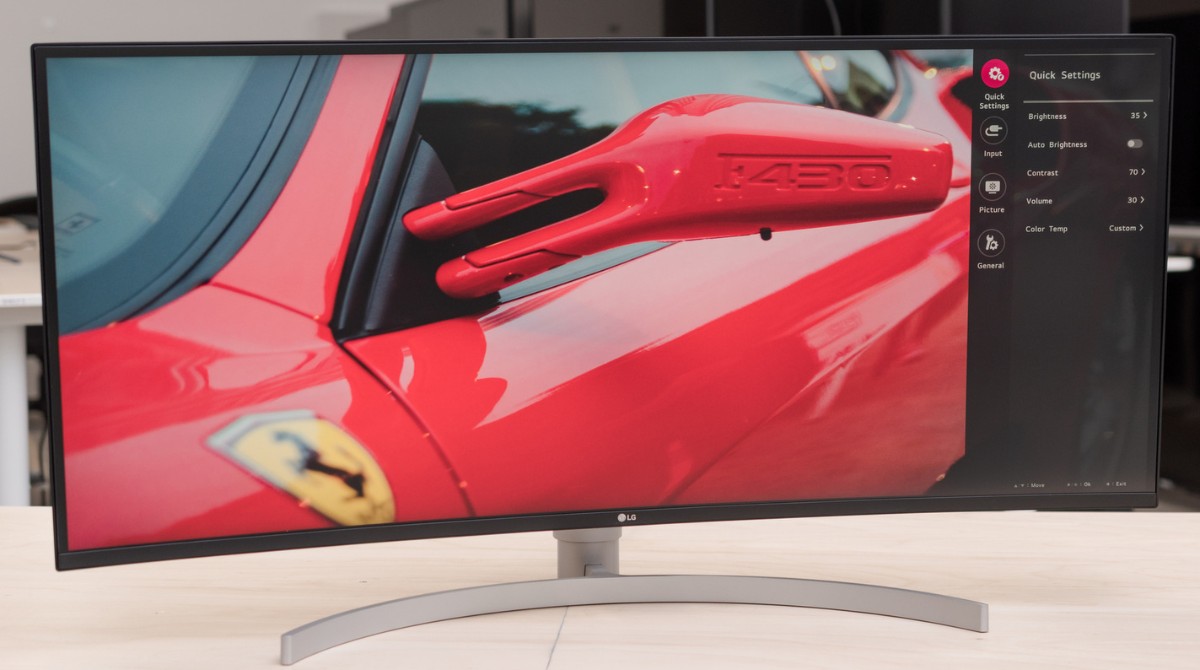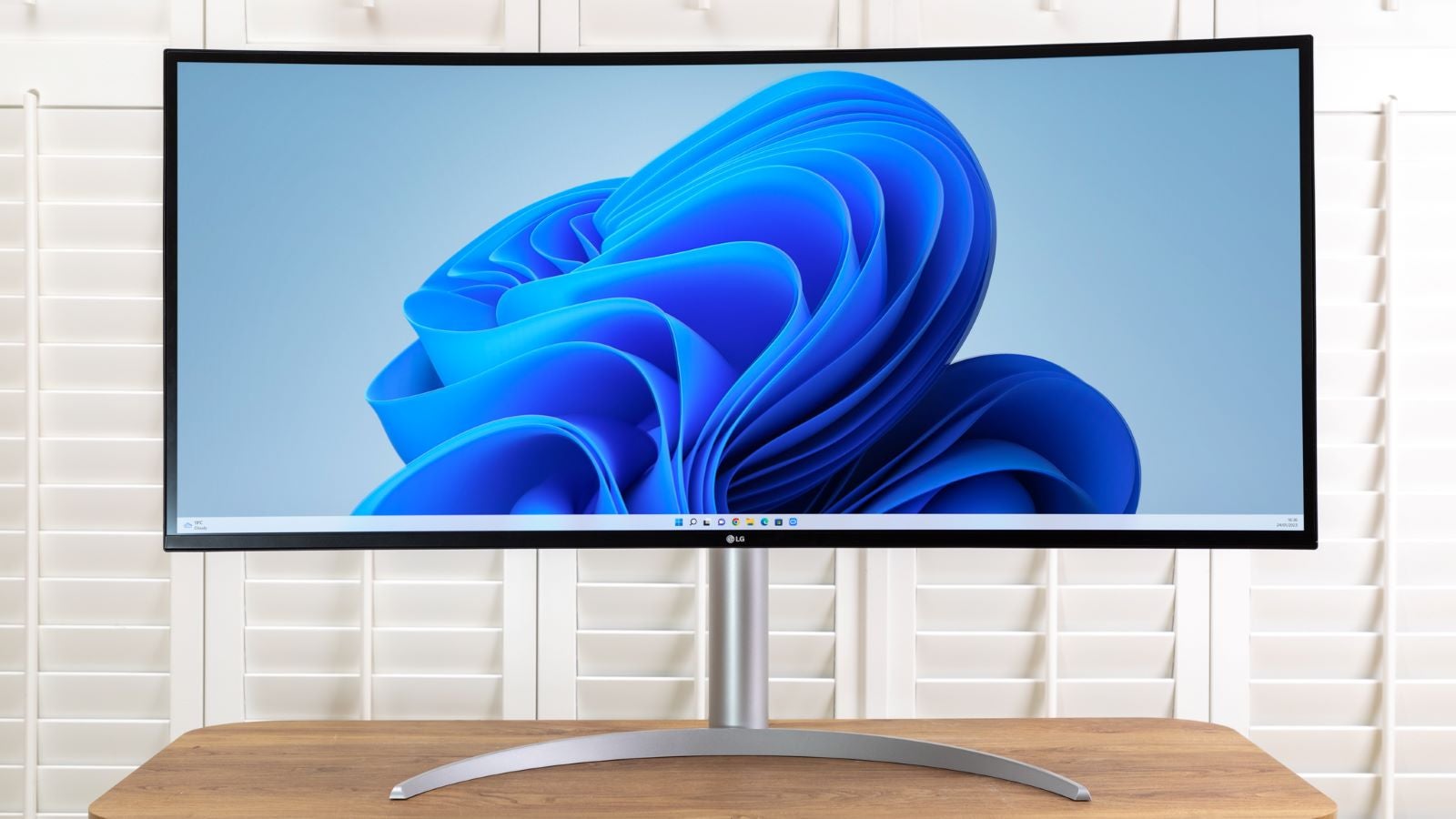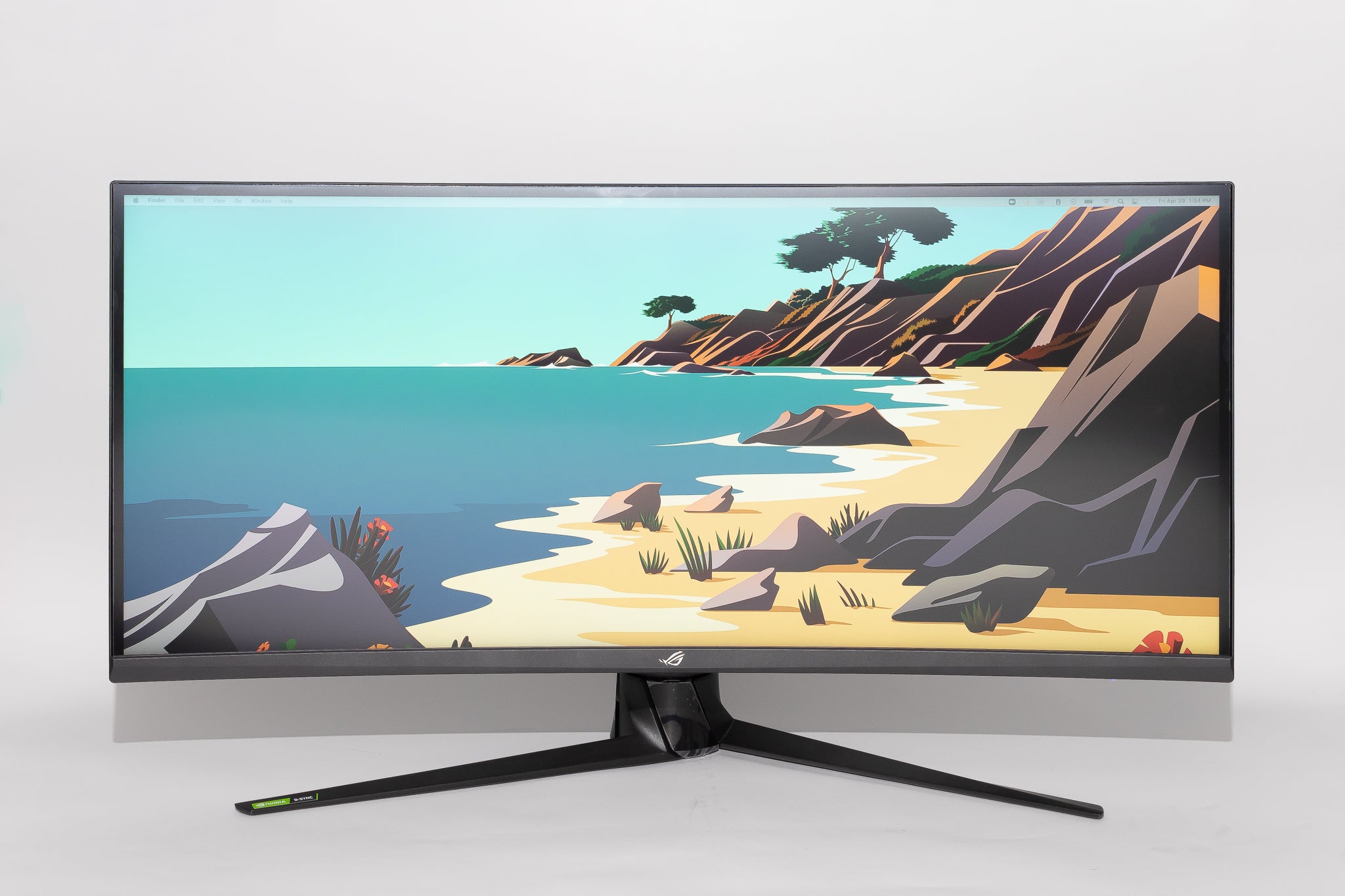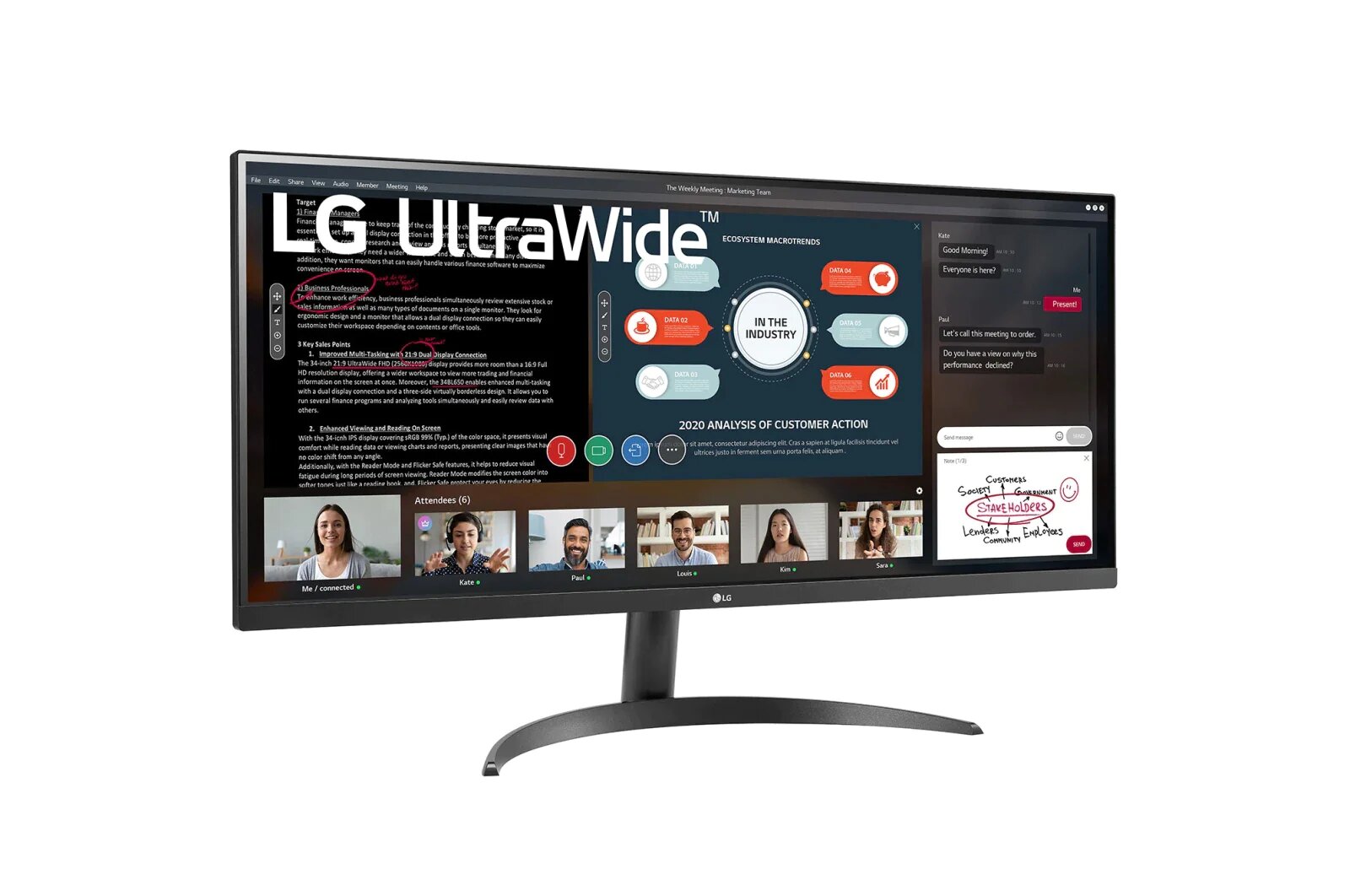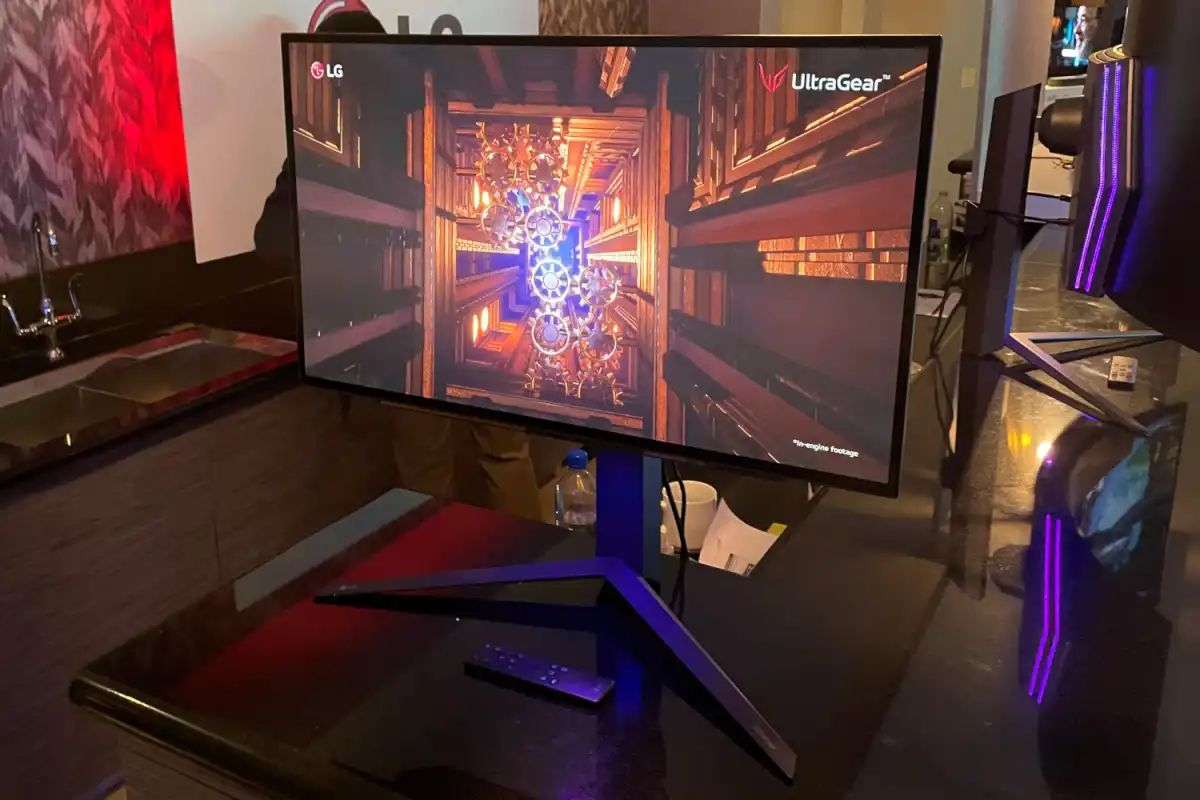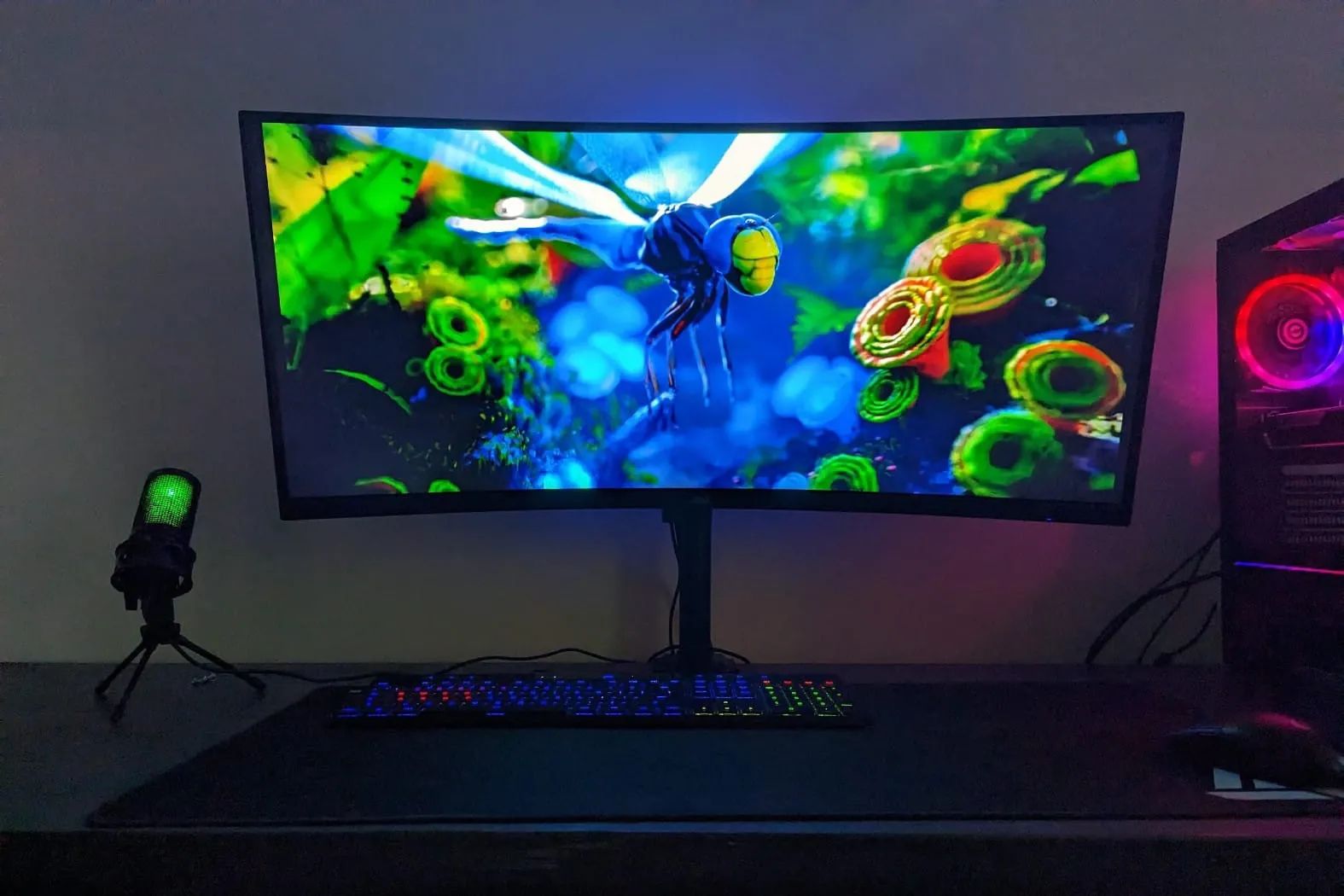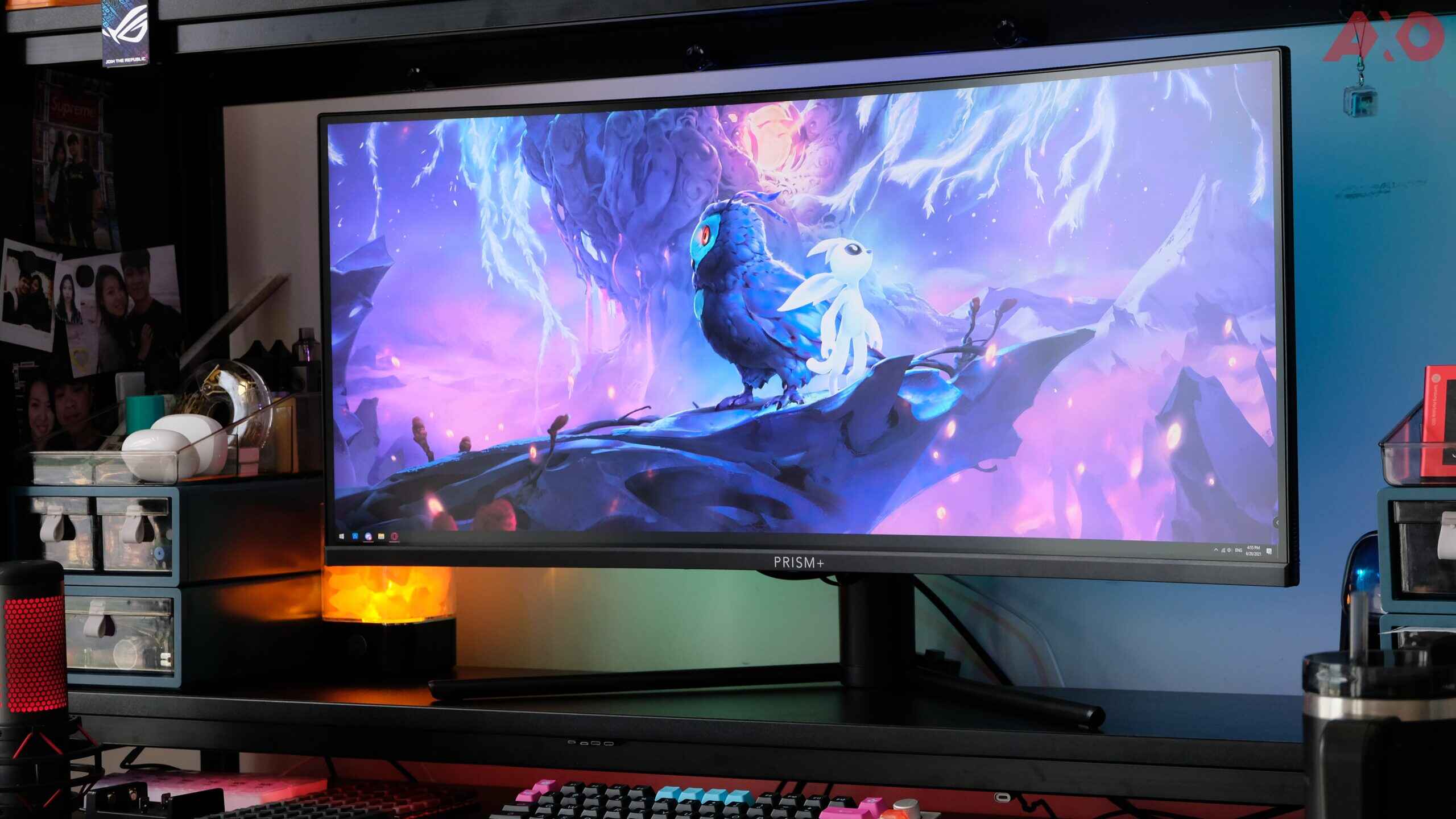Introduction
Welcome to the world of LG Ultrawide monitors, where stunning visuals and immersive experiences await. As you unbox your new LG Ultrawide monitor, you may notice a small LED light positioned somewhere on the front or bottom of the monitor. This little light, known as the Power LED, holds crucial information about the power status of your monitor.
But what exactly is the Power LED, and why is it important? In this article, we will delve into the world of the Power LED on an LG Ultrawide monitor and shed light on its significance. From understanding how it functions to deciphering its various colors and indications, we will guide you through it all.
Whether you are a gaming enthusiast, a professional content creator, or simply someone who enjoys a visually captivating display, the Power LED on your LG Ultrawide monitor plays a key role in ensuring uninterrupted and optimal usage. So, let’s dive in and explore the world of the Power LED together.
What Is Power LED?
The Power LED on an LG Ultrawide monitor is a small light that indicates the power status of the monitor. It is typically located on the front or bottom bezel of the monitor. This LED light serves as a visual indicator, providing information about whether the monitor is turned on, in standby mode, or powered off.
Power LEDs are commonly found in electronic devices as a means of providing users with a quick way to determine the device’s power status at a glance. In the case of an LG Ultrawide monitor, the Power LED serves a similar purpose, allowing users to easily identify whether the monitor is active or not.
The Power LED is designed to be intuitive and user-friendly. With just a quick glance at the monitor, you can determine whether it is powered on and ready for use or if it is in standby mode, conserving energy while waiting for your command. This simple yet effective feature enhances the overall user experience by providing instant feedback regarding the monitor’s power status.
Depending on the model of your LG Ultrawide monitor, the Power LED may vary in shape, size, and placement. Some monitors may have a single LED, while others might have multiple LEDs that indicate various functions such as power, input source, and more. However, for the purpose of this article, we will primarily focus on the Power LED and its power-related indications.
Why is the Power LED Important?
The Power LED on an LG Ultrawide monitor may seem like a small and insignificant detail, but it serves a crucial role in enhancing the user experience and ensuring smooth operation. Here are a few reasons why the Power LED is important:
1. Power Status: The Power LED provides instant information about the power status of your LG Ultrawide monitor. Whether it is powered on, in standby mode, or turned off, this visual indicator allows you to quickly determine the monitor’s status without having to press any buttons or check the settings menu.
2. Energy Conservation: The Power LED helps you conserve energy by indicating when the monitor is in standby mode. When you are not actively using your monitor, it can automatically switch to standby mode to save power. The Power LED will display a specific color or blink in a particular pattern to indicate that the monitor is in standby mode, reminding you to turn it off completely when not in use.
3. Troubleshooting: The Power LED can be a helpful tool for troubleshooting any power-related issues with your LG Ultrawide monitor. If the Power LED does not illuminate or behaves abnormally, it can indicate a potential power supply problem. By observing the behavior of the Power LED and referring to the monitor’s user manual, you can gather valuable information to identify and resolve any power-related issues.
4. User-Friendly Design: LG takes pride in creating user-friendly devices, and the inclusion of the Power LED is a testament to that commitment. With a quick glance at the monitor, users can easily determine if it is powered on and ready for use, enhancing convenience and usability.
5. Aesthetics: The Power LED adds a touch of modernity and elegance to the overall design of an LG Ultrawide monitor. It complements the sleek and innovative look of the device, contributing to a visually appealing setup.
In summary, the Power LED on an LG Ultrawide monitor has several important functions. It provides valuable information about the power status, helps conserve energy, aids in troubleshooting, contributes to user-friendly design, and enhances the aesthetics of the monitor. Paying attention to the Power LED ensures a seamless and optimal experience with your LG Ultrawide monitor.
How Does the Power LED on an LG Ultrawide Monitor Work?
The Power LED on an LG Ultrawide monitor operates based on the power status of the monitor. It is designed to provide users with a clear indication of whether the monitor is powered on, in standby mode, or turned off. Let’s take a closer look at how the Power LED works:
1. Power On: When you turn on your LG Ultrawide monitor, the Power LED will typically illuminate with a solid color, such as white or blue. This indicates that the monitor is powered on and ready for use. The specific color may vary depending on the model of the monitor, so it’s essential to refer to the user manual for accurate information.
2. Standby Mode: When the LG Ultrawide monitor is not actively in use, it can enter standby mode to conserve energy. In this mode, the Power LED may display a different color or blink in a specific pattern. The color and pattern can vary depending on the model of the monitor. Standby mode allows the monitor to consume minimal power while still being readily available to be powered on when needed.
3. Power Off: If you manually turn off the monitor or if it goes into an idle state for an extended period, the Power LED will typically turn off completely. This signifies that the monitor is no longer powered and helps conserve energy by eliminating any unnecessary power consumption.
It’s important to note that different LG Ultrawide monitor models might have additional features or indications associated with their Power LED. For example, some monitors may have a pulsating Power LED when they are in standby mode, while others may have different colors to indicate specific alerts or warnings. Therefore, it’s essential to consult the user manual that comes with your specific monitor model to understand its unique Power LED functionalities.
Overall, the Power LED on an LG Ultrawide monitor is a straightforward yet effective mechanism to inform users about the power status of the monitor. By understanding the different colors, patterns, and behaviors of the Power LED, you can easily determine if your monitor is powered on, in standby mode, or turned off.
Understanding the Power LED Colors and Indications
The Power LED on an LG Ultrawide monitor uses various colors and indications to provide users with valuable information about the monitor’s power status. By understanding these colors and indications, you can easily interpret the meaning behind the Power LED’s behavior. Let’s explore the common Power LED colors and their corresponding indications:
1. Solid White/Blue: A solid white or blue Power LED typically indicates that the LG Ultrawide monitor is powered on and ready for use. This is the normal mode of operation, and the monitor should display content without any issues.
2. Blinking White/Blue: A blinking white or blue Power LED may indicate that the monitor is in standby mode. In this mode, the monitor is still powered but conserving energy. It is waiting for a command to wake up and display content.
3. Solid Amber/Yellow: Some monitors use a solid amber or yellow Power LED to indicate standby mode. Similar to blinking white/blue, this color signifies that the monitor is in a low-power state and awaiting activation.
4. Blinking Amber/Yellow: A blinking amber or yellow Power LED can suggest a power-saving mode or sleep mode. The monitor is conserving energy by reducing backlight brightness and other resources. Moving the mouse or pressing a button on the keyboard should wake up the monitor from this mode.
5. Solid Red: In certain cases, a solid red Power LED might indicate a power or hardware issue. If you observe this color, it is advisable to consult the user manual or reach out to technical support to troubleshoot the problem.
6. No Power LED: If the Power LED is not illuminated at all, it typically means that the monitor is completely powered off. In this state, the monitor is not consuming any power.
It’s important to note that different LG Ultrawide monitor models may have slightly different color schemes or indications for their Power LED. Therefore, it is crucial to refer to the user manual specific to your monitor model to understand the precise indications and their meanings.
By paying attention to the Power LED’s colors and indications, you can easily determine the current power status of your LG Ultrawide monitor. This helps you to save energy, troubleshoot any potential issues, and ensure a seamless user experience.
Troubleshooting the Power LED on an LG Ultrawide Monitor
The Power LED on an LG Ultrawide monitor can provide valuable insights when troubleshooting power-related issues. If you encounter any problems with the Power LED, here are some troubleshooting steps you can follow:
1. Check Power Connection: Ensure that the monitor is securely connected to a power source. Verify that the power cable is properly plugged into both the monitor and the power outlet. If the Power LED remains off, try connecting the monitor to a different power outlet to rule out any issues with the power source.
2. Inspect Power Cable: Examine the power cable for any signs of damage, such as frayed wires or bent connectors. If you notice any issues, replace the power cable with a new one. Damaged power cables can prevent the monitor from receiving proper power and result in the Power LED not illuminating.
3. Toggle Power Switch: If your monitor has a physical power switch, make sure it is turned on. Some monitors have a separate power switch on the back or side panel. Toggle the power switch to ensure it is in the “ON” position.
4. Reset Power Settings: In some cases, the power settings on the monitor might be causing issues with the Power LED. Access the monitor’s settings menu and restore the power settings to their default values. This can help resolve any software-related problems that might affect the Power LED.
5. Check Power Source: If the Power LED remains off, verify that the power source you are using is functioning correctly. Try plugging another device into the same power outlet to confirm if there is power available. Additionally, consider using a different power cord or adapter to rule out any issues with the power source.
6. Contact Technical Support: If you have gone through the above steps and are still experiencing issues with the Power LED, it is advisable to contact LG’s technical support for further assistance. They can provide specific troubleshooting advice based on your monitor model and help you resolve any power-related problems.
Remember, the Power LED serves as a useful diagnostic tool, providing indications about the power status of your LG Ultrawide monitor. By following the troubleshooting steps mentioned above, you can identify and resolve any issues that may be affecting the Power LED’s functionality.
Conclusion
The Power LED on an LG Ultrawide monitor plays a fundamental role in enhancing the user experience. It provides a quick and convenient way to determine the power status of the monitor, whether it’s powered on, in standby mode, or turned off. Understanding the various colors and indications of the Power LED helps users make informed decisions and troubleshoot potential issues.
By paying attention to the Power LED, users can conserve energy by recognizing when the monitor is in standby mode and taking necessary actions to turn it off completely when not in use. Additionally, the Power LED assists in troubleshooting power-related problems, allowing users to identify potential issues and seek appropriate solutions.
LG’s commitment to user-friendly design is evident in the inclusion of the Power LED on their Ultrawide monitors. The LED not only serves a functional purpose but also adds a touch of elegance to the monitor’s overall design.
If you ever encounter any problems with the Power LED, following the troubleshooting steps mentioned in this article can help identify and resolve issues effectively. It is always recommended to consult the user manual or seek assistance from LG’s technical support team for model-specific guidance.
In conclusion, the Power LED on an LG Ultrawide monitor serves as an essential component, providing users with valuable information about the power status of the device. By understanding its colors and indications and utilizing the troubleshooting steps when needed, users can optimize their experience with an LG Ultrawide monitor.







